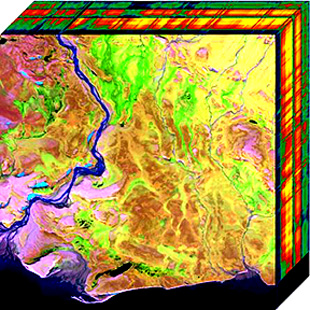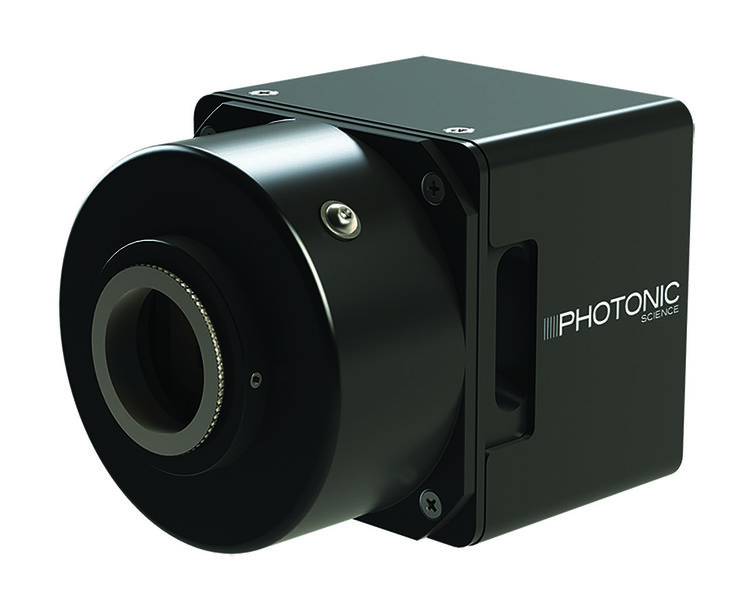News
Hyperspectral Imaging: Principles & Applications
19th Aug, 2020
A spectral imaging system is a tool capable of capturing image data across UV, VIS, NIR, and SWIR spectral bands. Optics will typically gather image data from UV-VIS, VIS-NIR or SWIR.
Hyperspectral imaging (HSI) uses a much broader spectrum of light to obtain both imaging and spectroscopic data simultaneously. Unlike conventional systems, which simply assign primary color values to each pixel in a scene, hyperspectral imaging collects detailed spectral information for every single pixel.
How Does Hyperspectral Imaging Work?
Hyperspectral imaging produces multi-spectral color images with high resolution by considering a continuum of spectral lines altogether. The wavelength ranges of interest depend on the type of hyperspectral camera used, though most can capture contiguous wavelengths on the visible, near-infrared (NIR), short-wave infrared (SWIR), and mid-wave infrared (MIR) spectra with a spectral resolution approaching a single nanometre (nm). When light strikes the plane array of a hyperspectral imaging system, it is broken down into numerous spectral bands across that extremely broad, continuous wavelength range.
The contiguity of a hyperspectral sensor’s wavelength range is critical, as hyperspectral imaging is built-up of a set of spatial images that each represent a narrow spectral band. Image resolution depends on the number of spectral channels and the interval, or step, between each one. Capturing the full spectrum of interest of a scene in this way yields a characteristic dataset known as a hypercube; a three-dimensional image set with two spatial dimensions and a third spectral dimension.

A graphical representation of a hypercube
Beyond these very basic working principles, hyperspectral imaging becomes much more diverse with several different methods available for sampling a hyperspectral cube. Spatial scanners read the spectral data over time, which is slow but incredibly detailed, while snapshot imagers use a focal plane array, or staring array to generate an instantaneous snapshot. Each of these techniques and all of those in-between provide the unique spectral fingerprints of imaged objects within the electromagnetic regions of interest.
Applications of Hyperspectral Imaging
One supposed drawback of hyperspectral imaging is its slow acquisition rates and the fact that the apparatus can be prohibitively expensive. However, significant advances have been made to improve the cost and applicability of hyperspectral systems. Common applications of hyperspectral cameras today include:
- Agriculture, where spectral images with infrared data can be used to monitor the coverage, dosage, or efficacy of pesticides, as well as supporting crop health maintenance.
- Art, where reflectance information can assist with conservation activities and non-destructive study of priceless artifacts.
- Industrial, where spectral data can provide information relating to defects or foreign material as part of advanced quality assurance and control processes.
- Medical, where spatially resolved spectral images can assist with disease diagnosis and enable image-guided surgery.
- Military, primarily for reconnaissance and surveillance, although hyperspectral imaging is increasingly employed to eliminate biological and chemical threats.
- Scientific, with practically limitless uses in an ever-growing cross-section of fields.
Hyperspectral Imaging with Photonics Science
Photonics Science is an industry-leading developer of short-wave infrared (SWIR) cameras based on InGaAas focal plane arrays. Our Cooled VGA SWIR InGaAs Cameras cover a broad spectral range in the short-wave region of the infrared spectrum, supporting hyperspectral imaging where the spectral range covers wavelengths that are much longer than those of visible light. Contact us today if you would like to learn more about integrating our equipment into your hyperspectral imaging apparatus.




